Power Chords
Many guitar players have made a career out of playing nothing but 4ths, 5ths and Power Chords.
Power Chords are a fast track into playing along with songs that you like.
Make no mistake. These are partial chords. They are neither Major nor Minor.
That is why I waited until this point for this tutorial.
You are better off learning all open chords, and even Barre Chords before these chords.
Having the understanding of Major and Minor chords, will help you go even further in your guitar journey.
The intervals we already learned
In the previous section, we learned the intervals of the Major Scale.
Here is the 4th interval:

But, for now, here is the 5th interval:
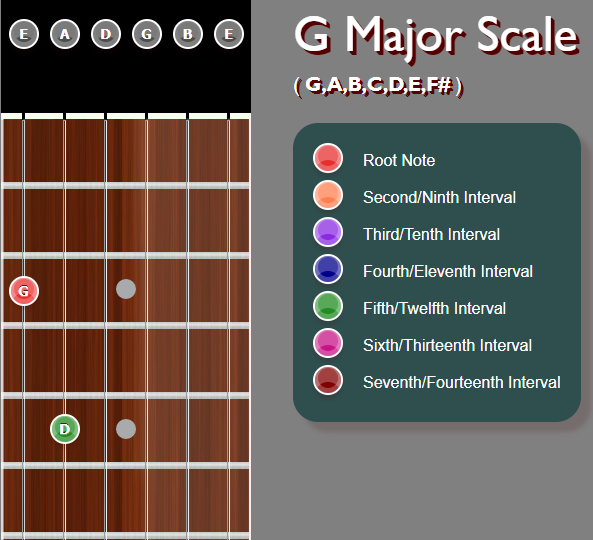
Here is the Octave Interval:
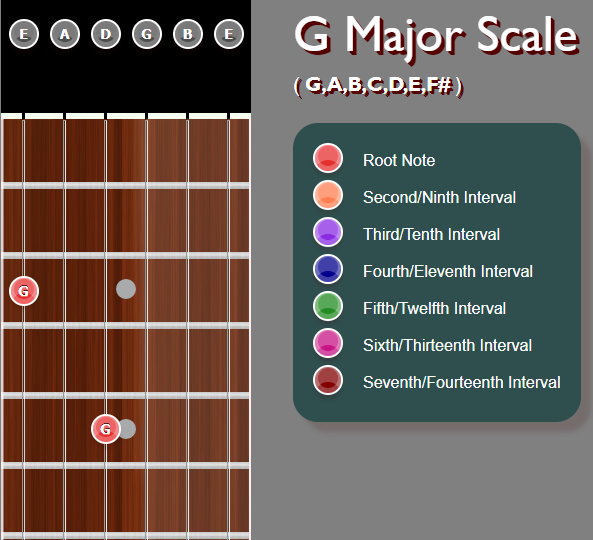
Power Chords
The Power Chord is simply the 5th interval and the Octave interval.
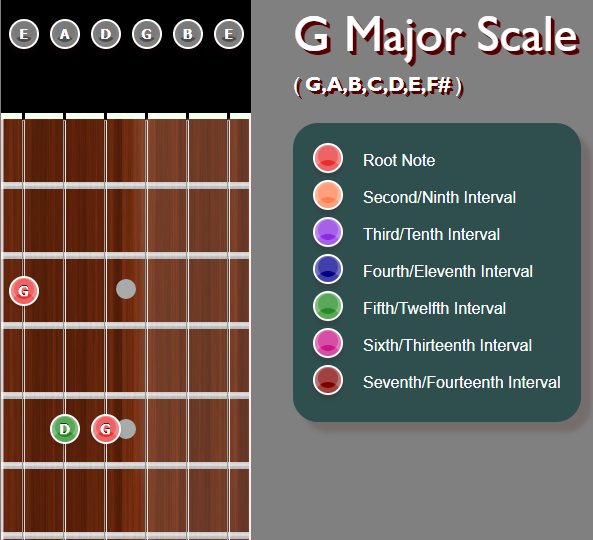
Power Chords are commonly called 5th Chords, since they only contain the ROOT and the FIFTH INTERVAL.
A power chord can either include the octave, or not. Adding the octave gives it a fuller sound.
Like Barre Chords, you can move them anywhere on the neck,
without changing the fretting pattern, on the low E or A strings.
If you just play the 5th, and not the octave, you can play them on the D string, without changing the form.
Remember the B string gets tuned on the 4 fret of the G string, where the others are on the 5th fret?
That's because the B string is tuned a half step lower than the other frets.
To compensate for this, when we play the octave note on the B string, we need to sharpen the note a half step.
Here is an example of an E Power Chord on the DGB strings:

Inversions
Inversions mean that the notes are not played, in order, from lowest to highest.
In the following graphic, we show the G Power Chord, with the Root to 5th interval circled.
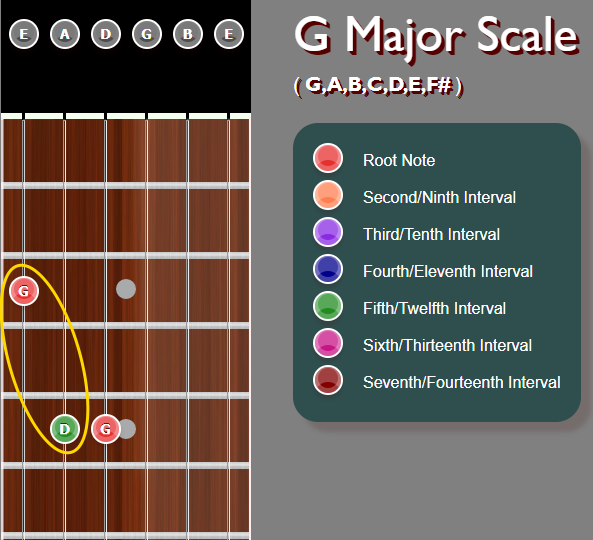
As you can see, the notes are G (root) and D (5th).
Here are the same notes, but the G is one octave up from the root.

That is either a D and it's 4th interval, or an inverted G5 Chord, since the notes G and D.
This is called the 1st inversion. Since we only have 2 notes, there is only one possible inversion.
Thus, even though the root of the 4th is a D, this is still a G5 Chord or G Power Chord.
Normally, if the root of a chord is not the lowest note, it is called an OVER chord.
In this case, the OVER chord would be G5/D, meaning G 5th Chord, with a D bass note.
We'll delve into slash chords later. For this tutorial, just think of them as inverted 5ths.
Songs That (Mostly) Use Power Chords
There are a ton of songs that mainly use power chords.
Most punk rock songs use Power Chords, both full power chords, 5th and/or 4ths.
Almost every Ramones song is based entirely on Power Chords. Joan Jett is another example.
Many well known rock songs use Power Chords. A few off the top of my head are:
- Black Sabbath - Iron Man
- Nirvana - Teen Spirit
- U2 - Vertigo
- Scorpions - Rock You Like A Hurricane
.....and many more.
Classic Rock Riff played in 4ths
One song that I left off the list (on purpose) was a riff that is considered the greatest rock riff.
Deep Purple's Smoke On The Water is a rock anthem that is elegant in it's simpilicity.
For most kids, beginning guitar, this is the first song they learn.
One funny fact is that most play it wrong. Some use 5th (non-inverted). Most use a pick.
Ritchie Blackmore used his thumb and index finger to play this classic riff, not a pick.
1.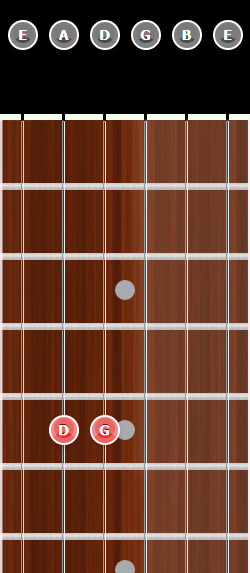 2.
2.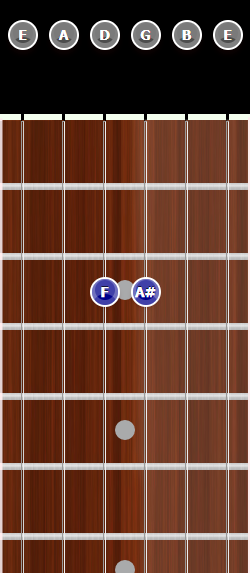 3.
3.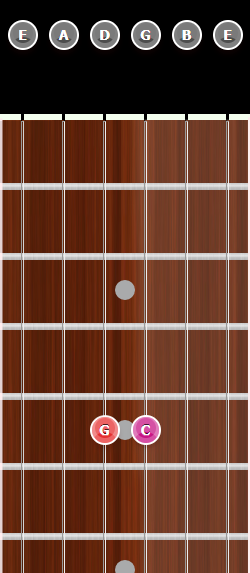 4.
4.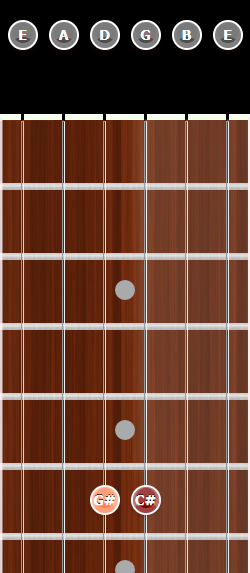
The easiest way to play this is to start with your ring finger for graphic 1, barring the 2 notes.
Index finger for grpahic 2, also barring both notes.
Ring Finger for graphic 3 and 4, barring both notes.
Using the graphics (1-4), the playing sequence is: 1 - 2 - 3, 1 - 2 - 4 - 3, 1 - 2 - 3 - 2 - 1
This classic riff is all in 4ths/Inverted 5ths.
If you're unfamiliar with this classic rock riff, here is an example of it.
Power Chords on Open String Roots
There are also 4 open Power Chords. Open E, A, D, and G Power Chords.
Here are open E and A Power Chords:
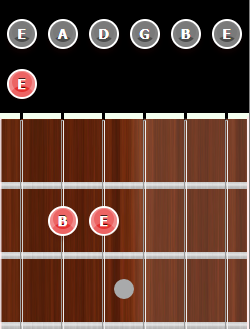
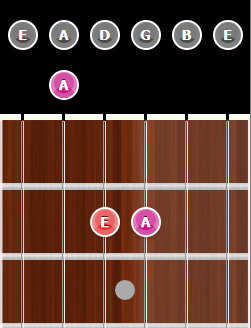
Here are open D and G Power Chords:
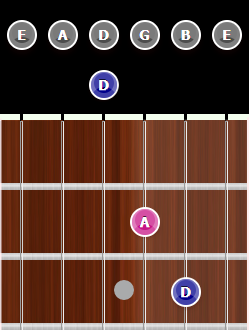

The first 2 open Power Chords, E and A, are much more common than D and G.
Palm Muting
Palm Muting is exactly what it says. You lay the palm of your picking hand on the strings.
This muffles the sound of the chord, and on an electric guitar with overdrive/distortion,
it gives the guitar that sound that we hear in many rock songs.
Just simply lay your palm, near the wrist on the strings you want to palm mute.
Practice different levels of palm muting, and find the one that sounds perfect to you.
Pluck the strings to play the chord, and when you get the correct level of pressure,
you will get that wonderful, percussive sound that you probably hear in your favorite song.
Almost all players use palm muting in heavier music genres. I'm not sure I've heard a song
in a heavy genre that doesn't use palm muting in the main riff, or somewhere in the song.
Here is a short clip of a distorted sound. The clip uses palm muting on the D string,
while playing other parts on the G and B string.
Notice that the D string does not ring out, and give a slight percussive sound.
Other Power Chords
You are not limited to these Power Chord templates.
You could even play extended Power Chords, which are like 2 Power Chords together.
In this example, I show an open E Power Chord, but I've also added the next octave Power Chord to it.
You could easily use your index finger to bar the 2nd fret of the A and the D strings,
and add the second octave with your ring and pinky.
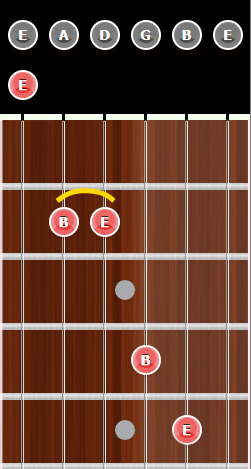
You really don't need the open E in this Power Chord. By eliminating it, you've added another
moveable Power Chord form to your guitar arsenal.
Wrap Up
Power Chords are very powerful, and very easy to master.
The caveat is that you could find yourself not wanting to do anything but Power Chords.
If that's what you want to do, fine.
But there is a whole other world to explore in the guitar realm.
Power Chords can also help you learn the fretboard, because the same chord form,
can be used up and down the neck. You really only need to know the root note.
But by learning these root notes on each fret of each string, you are expanding your knowledge,
and that knowledge will help you when you move onto future tutorials.